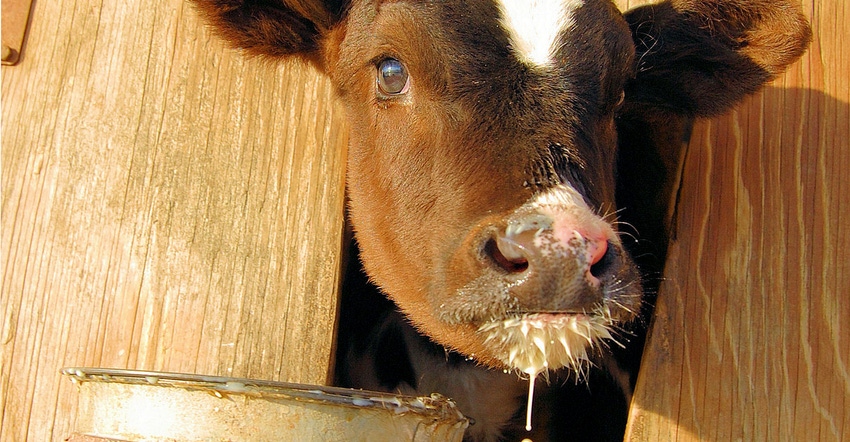November 7, 2018

By Deborah Jeanne Sergeant
Nothing can replicate the care a large-animal veterinarian can provide. But understanding the basics of bovine calving can help herdsmen improve birthing outcomes.
Jerry Bertoldo, a dairy specialist with Cornell University, says that “it’s important to recognize that labor is coming” and when the best time to call a vet is.
Cows’ stage 1 labor behavior can include increased restlessness, circling behavior, mucus discharge from behind, increased defecation and urination, the relaxation of pelvic ligaments, a lack of appetite, and cervical dilation.
"The vulva becomes a little puffy and has more fluid," he says. "The wrinkles go away."
Inside, the cervix softens and starts to dilate.
In stage 2, the fluid-filled placenta and membranes push through the cervix into the vagina.
"This calf, even in the uterus, is in a fluid-filled sac that has 8 to 10 gallons of fluid," he says. "When the calf comes through, the fluid will rupture."
The calf will also rotate into a normal position and enter the cervix. This stretches the birth canal and releases oxytocin thanks to pressure receptors in the cervix. During this stage, the intensity and frequency of contractions increase.
The total time for stage 2 labor varies based on age and among breeds. The average time for a mature cow, he says, is 30 minutes to two hours. For a heifer, it's three to four hours.
"It's important to keep in mind that if we have a scared animal, usually a heifer, we can delay stage 2," he says. "We have to be careful with how we move heifers."
Knowing when to help
Bertoldo thinks crowded birthing pens can distract cows, and that helping cows just to hasten birth quickly is a bad idea.
"It's more complicated than that," he says. "Cervical dilation is the key factor in the birthing process. Until the cervix is as big as the birth canal, that calf won't pass."
About 20% of pregnant cows need some assistance giving birth. Forty percent of calves that are highly stressed die at three weeks of age, he says.
 HELPING OUT: Jerry Bertoldo, Cornell dairy specialist, says it’s important for herdsmen on dairy farms to know the different stages of calving so they know when the appropriate time is to step in and help.
HELPING OUT: Jerry Bertoldo, Cornell dairy specialist, says it’s important for herdsmen on dairy farms to know the different stages of calving so they know when the appropriate time is to step in and help.

After stage 2 begins, cows generally need to be checked every 30 minutes.
"Just every hour isn't enough," he says, adding that recording progress in a notebook for someone else who comes along to check on the cow is a good idea.
Cleanliness is key
If there's no progress during labor, the cow may need an examination to see what's going on. Bertoldo says that cleanliness is key.
"One of my favorite things as a vet is to be clean," he says. "It's like getting a cow ready for surgery."
Tie the tail out of the way and use soap on the skin, then use a sterile lubricant and a clean sleeve when performing an examination.
“Don't wash it out," he says. "Inside the cow, soap is irritating, like getting soap in your eye. Don't put soap in water that is going inside the cow. Soap is a poor lubricant. Don't use Vaseline or mineral oil. Don't be in a hurry. Work with the cow."
It also helps to use a head restraint such as a chute, headlock or tied halter.
An examination can determine the position of the calf and how dilated the cow is.
Signs of distress include bleeding and mucus around the rectum; swollen or purple tongue; blood or cotyledons in fetal membranes; and poor calf reflexes. A herdsman can check the cow’s reflexes by pinching the tongue or putting a finger near its eye
"If you're not sure of the calf's presentation, never pull," he says. "If you can't figure out the presentation, get help."
The final stage
Stage 3 of labor also includes passage of fetal membranes.
"It usually doesn't come out with the calf," he says. "If it does come out with the calf and its wrapped around it, it likely detached."
The fetal membranes should deliver within two to six hours after the calf is born.
Bertoldo says any herdsman encountering difficulties should contact the farm's veterinarian.
Sergeant writes from central New York.
You May Also Like




